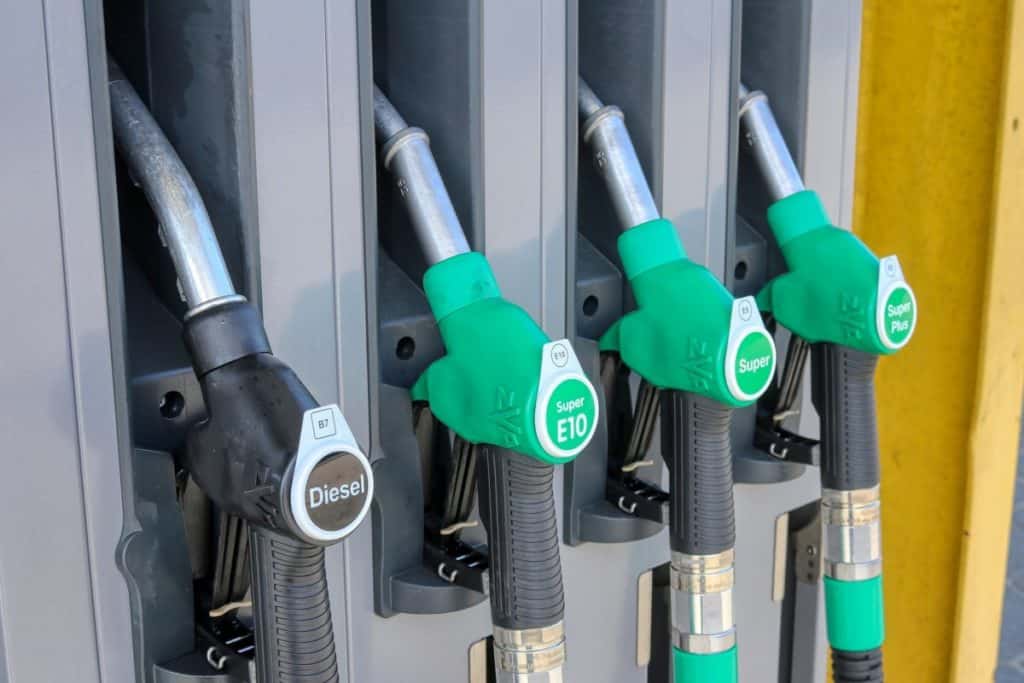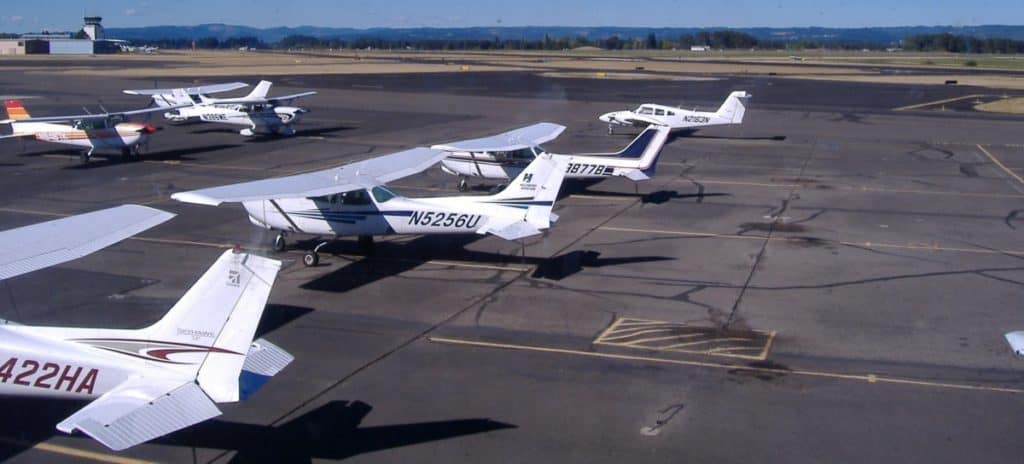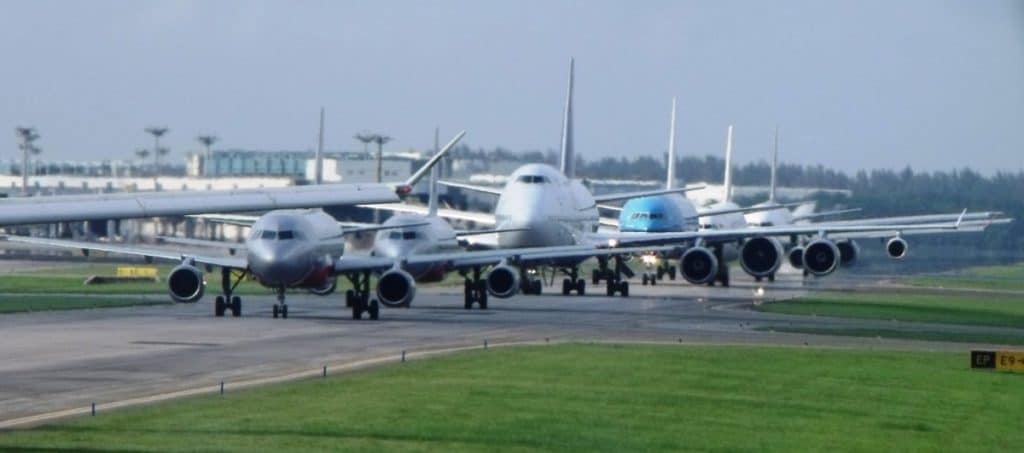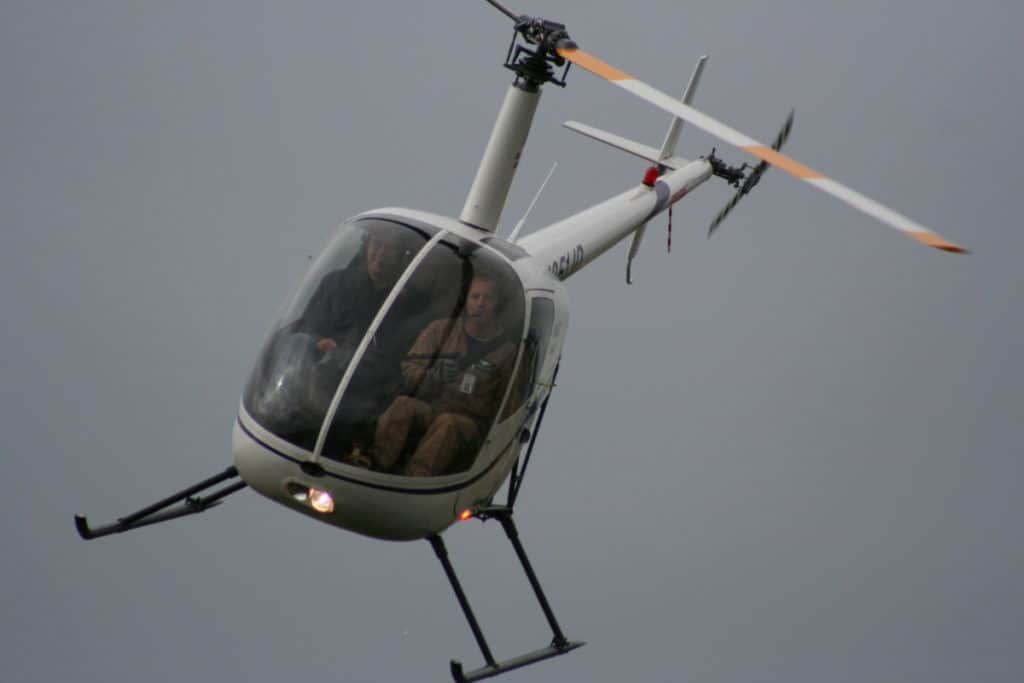
We have all been sat there on the plane getting ready for everyone else to find their seat and the refueling truck pulls up and starts to pump fuel into the wing of the aircraft. We have all heard of gas and diesel so which of these do aircraft use?
Jet A, Avgas & JP-8 are the main fuels used in aviation. Jet A is used for commercial & private gas turbine engines, Avgas is for commercial & private piston engines, and JP-8 is for military gas turbine engines. The current average price of Jet A & JP8 = $4.49/gal, and Avgas = $4.93/gal.
The fuel that an aircraft burn is not based upon the type of the aircraft itself but rather the kind of engine/s it has. There are varying grades of fuels within each type that are designed to have particular characteristics to help improve the efficiency of the fuel.
Let’s look at what fuels each type of engine uses…
The Main Fuel Types Used In Aircraft
The main types of fuel used in aviation today are split into 3 main categories:
- Fuel for Piston Powered Aircraft
- Fuel for Jet Engines or Gas Turbine Powered Aircraft
- Fuel for Military Aircraft
Piston Powered Engines
Aircraft that have piston-powered engines use Avgas – Aviation Gasoline. These engines are very similar to the engine you will find in your car and are the most common type of engine found on smaller aircraft like Cessna’s, Mooneys, Cirrus, and Piper airplanes.

The Avgas is more refined than the gas you put in your car because aircraft need the reliability of its fuel to prevent the engine from stopping and causing the pilot to start sweating!
There Are Two Types of Avgas Currently Available in North America:
- Avgas 100
- Avgas 100LL
Both grades are based on the 100 octane of gasoline which is highly refined to provide the reliability demanded by aviation engines with the LL standing for Low Lead. The Low Lead is the most commonly found Avgas around North America.
Avgas is very similar to the regular gas you find at your local gas station, however, the gasoline for your car only comes in octanes of 87, 89, 91 & 93/94.

Octane numbers are designed to meet particular engine demands of compression in the cylinders. Engines with a higher cylinder compression require a higher octane number.
One really nice feature of aviation fuels is that the manufacturers dye the fuels to allow for instant and easy identification by the refueler and the pilot.
Avgas 100 is dyed Green
Avgas 100LL is dyed Blue
When a pilot fills up their aircraft from an unknown source like a remote fuel bowser or an airport they have never been to, it is very easy to take a quick fuel sample to ensure they are putting the right fuel into their aircraft. By comparison, jet fuel is clear.
Many years ago, a student pilot of mine was an aircraft mechanic and he accidentally put jet fuel into the tank of a piston-powered helicopter. The pilot took off and soon returned with incredible power reduction.
The mechanic spent the next week disassembling the engine and cleaning it on his own time after his furious boss found out!

Join My Newsletter & Get Great Tips, Information and Experiences To Help You Become a Superb Pilot!
There have been many different types of Avgas over the decades but as fuel technology has advanced these fuels have been discontinued by the manufacturers. Some of these fuels include:
Avgas 80 – Relaced by 100 & 100LL
Avgas 115 – High power fuel for the military. Developed in the 1940s
Avgas UL91 & UL94 – Lead-Free versions of 100LL but with dramatically reduced power output
Gas Turbine or Jet Engines
The jet engine was the giant leap forward in propulsion technology but it could not function properly at the low temperatures associated with high-altitude flight so an alternative needed to be found.
Tody’s jet fuel is a Kerosene-based product that also comes in a range of variants to meet different operating requirements.

Gasoline and Kerosene are not too dissimilar fuel types, however, kerosene is more like Diesel. Most large and corporate aircraft now use gas turbine engines and even though there are many different types of gas turbine engines, they all work on the same basic principles and all use jet fuel.
In North America, the Two Main Jet Fuels Used Are:
- Jet A
- Jet A-1
Both of these fuels are commonly available and can be used by any gas turbine engine. The main difference between them is the operating temperatures they can be used in.
Jet A has a freezing point of -40°C/-40°F
Jet A-1 has a freezing point of -47°C/-53°F
When operating in the most remote parts of Northern Canada and Alaska many jet aircraft would use Jet B which was a wide-cut kerosine jet fuel that had a freezing point of -60°C-76°F. The added cost to produce this fuel and have it shipped separately to Jet A has seen its use diminish over the last decade.
Now a Fuel Icing Inhibitor (FSII) additive commonly known by its brand name Prist can simply be added to Jet A by the fuel truck as it is pumped into the aircraft.
This icing inhibiter increases the freezing point of Jet A from -40°C/-40°F to -43°C/-45°F for use when the mercury really drops! Most large aircraft, however, do not require the use of Prist as they have heated fuel lines to keep the fuel above its freezing point.

This allows only a single type of fuel to be shipped north, usually Jet A-1, thus keeping the cost per gallon of jet fuel to a minimum.
The formulation of Jet A fuel remains pretty much identical across the globe to allow internationally traveling airliners to fuel up without any problems although some countries have their own names for Jet A:
Russia = TS-1
China = RP-3
Most of the world’s aviation fuel is manufactured by one of these major companies all abide by set standards to ensure the quality and specifications of their fuels all match each other:
- Agip
- BP
- ChevronTexaco
- ExxonMobil
- Kuwait Petroleum
- Shell, Statoil
- Total
Military Engines
Commercial engines and military engines are not too dissimilar in their design and the operating principles of each engine remain pretty much unchanged. The specifications required by the military can differ quite a lot and the fuel is no different.
The Fuels Used By The Military & NATO Forces Are Designated As:
- JP-8, or
- NATO F-34
This is their version of Jet A but with additional corrosion and icing inhibitors required by the military.
Most of the aviation engines used in the military are all gas turbines. The small amount of piston-powered aircraft used for training all uses regular Avgas.

The other main type of jet fuel used by the military is JP-5. This is a higher flash-point Kerosene that is mainly used by aircraft operating from aircraft carriers. It has increased additives and inhibitors to help with the harsh operating conditions of saltwater.
What Fuel Do Helicopters Use?
Helicopters with piston-powered engines use 100LL AvGas or Aviation Gasoline. Helicopters with gas turbine turboshaft engines use Jet A, Jet A1, or Jet B, which is a kerosine-based fuel. Gas turbine-powered helicopters have a much higher fuel burn and require larger fuel tanks.
Just like all fixed-wing aircraft, the type of fuel a helicopter uses is dictated by the type of engine it has inside it. Most smaller helicopters all use piston engines because of their reduced purchase and operating costs. This makes the helicopter cheaper for learning and private ownership.
All Piston Powered Helicopters Use Avgas

Piston-Powered helicopters can only lift so much weight, when bigger helicopters are needed (above 4 seats) then the switch to a gas-turbine engine is required.
All Gas Turbine Powered Helicopters Use Jet-A, Jet A-1, Jet B (If they can find any in drums laying around), or the Military’s JP-8 & JP-5.
When I fill up my helicopter, the fuel truck that rolls up is usually Jet A or Jet A-1, and to be honest I never ask which because both can be used and my helicopter has a minimum operator temperature limitation of -40°C/-40°F anyways.

To Finish
To sum up, any aircraft that is powered by a piston engine will use a gasoline-based fuel known as Avgas. For any aircraft that is powered by a gas turbine engine, it will use a kerosene-based fuel known as Jet Fuel.
Each type of fuel has several variants but 100LL Avgas, Jet A-1, and JP-8 fuels are the most common fuels used all over the world to power the aircraft flying around today.
Further Reading:
If you found this article helpful may I suggest these:
- How Much Fuel Does a Helicopter Burn? Get Your Visa Card Out!
- Ever Wonder How Pilots Know Where To Go? This Is How!
- Do All Pilots Have To Learn English?
- This is Why Helicopters Have Different Numbers of Rotor Blades?


